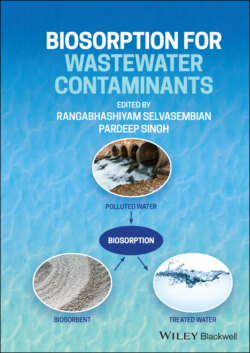Читать книгу Biosorption for Wastewater Contaminants - Группа авторов - Страница 14
Introduction
ОглавлениеIndustrial and technological development and population growth have provided countless advances in society and improved quality of life. However, the increase in production and consumption capacity also negatively impacts the planet due to emission of harmful gases and the increasing production and consequent disposal of solid wastes and wastewaters from domestic and industrial sources. The volume and concentration of contaminants present in waste streams depend on several factors such as population density, level of technological development in the country or region, climate, seasonality, etc.
Contamination of water and soil by industrial waste is a global concern. For most industries, providing access to clean, affordable water is one of the biggest challenges. In addition, industrial wastewater contains several polluting compounds (Hashemi et al., 2018; Barak et al., 2020). Thus, there is a need to establish the management of and industrial wastewaters based on strict environmental protocols, with the objective of eliminating these contaminants from the environment as much as possible. As a result, through the use of recent technologies, research has been carried out to provide intelligent solutions not only from an environmental point of view but also from an economic standpoint. Therefore, several technologies based on physical, chemical, and biological methods are investigated (Hashemi et al., 2018).
This chapter describes some of the contaminants present in industrial wastewaters, their environmental impacts, and their risks to human health. In addition, the efforts made to evaluate and define the best ways to control their dissemination in the environment are presented, as well as the treatment processes used and studied for eliminating contaminants.
